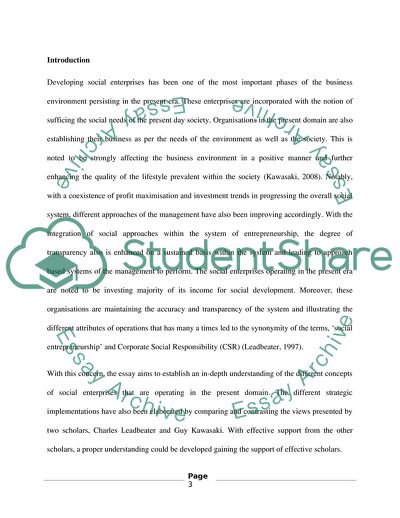Cite this document
(Compare and Contrast the Treatment of Social Enterprise Essay Example | Topics and Well Written Essays - 2250 words, n.d.)
Compare and Contrast the Treatment of Social Enterprise Essay Example | Topics and Well Written Essays - 2250 words. https://studentshare.org/sociology/1864480-compare-and-contrast-the-treatment-of-social-enterprise-by-two-scholars-with-distinctly-different-views-of-social-enterprise
Compare and Contrast the Treatment of Social Enterprise Essay Example | Topics and Well Written Essays - 2250 words. https://studentshare.org/sociology/1864480-compare-and-contrast-the-treatment-of-social-enterprise-by-two-scholars-with-distinctly-different-views-of-social-enterprise
(Compare and Contrast the Treatment of Social Enterprise Essay Example | Topics and Well Written Essays - 2250 Words)
Compare and Contrast the Treatment of Social Enterprise Essay Example | Topics and Well Written Essays - 2250 Words. https://studentshare.org/sociology/1864480-compare-and-contrast-the-treatment-of-social-enterprise-by-two-scholars-with-distinctly-different-views-of-social-enterprise.
Compare and Contrast the Treatment of Social Enterprise Essay Example | Topics and Well Written Essays - 2250 Words. https://studentshare.org/sociology/1864480-compare-and-contrast-the-treatment-of-social-enterprise-by-two-scholars-with-distinctly-different-views-of-social-enterprise.
“Compare and Contrast the Treatment of Social Enterprise Essay Example | Topics and Well Written Essays - 2250 Words”. https://studentshare.org/sociology/1864480-compare-and-contrast-the-treatment-of-social-enterprise-by-two-scholars-with-distinctly-different-views-of-social-enterprise.


